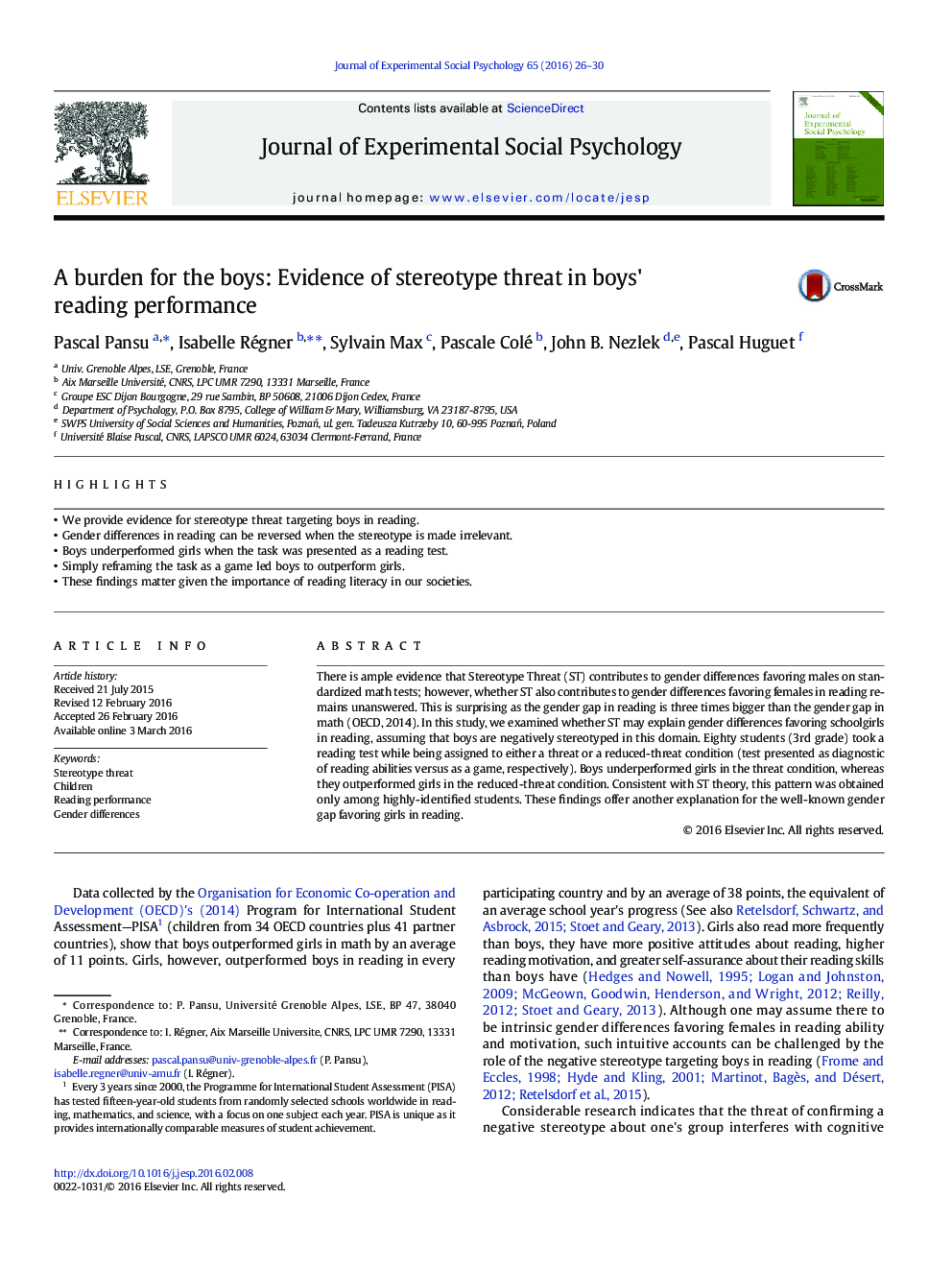| Article ID | Journal | Published Year | Pages | File Type |
|---|---|---|---|---|
| 947671 | Journal of Experimental Social Psychology | 2016 | 5 Pages |
•We provide evidence for stereotype threat targeting boys in reading.•Gender differences in reading can be reversed when the stereotype is made irrelevant.•Boys underperformed girls when the task was presented as a reading test.•Simply reframing the task as a game led boys to outperform girls.•These findings matter given the importance of reading literacy in our societies.
There is ample evidence that Stereotype Threat (ST) contributes to gender differences favoring males on standardized math tests; however, whether ST also contributes to gender differences favoring females in reading remains unanswered. This is surprising as the gender gap in reading is three times bigger than the gender gap in math (OECD, 2014). In this study, we examined whether ST may explain gender differences favoring schoolgirls in reading, assuming that boys are negatively stereotyped in this domain. Eighty students (3rd grade) took a reading test while being assigned to either a threat or a reduced-threat condition (test presented as diagnostic of reading abilities versus as a game, respectively). Boys underperformed girls in the threat condition, whereas they outperformed girls in the reduced-threat condition. Consistent with ST theory, this pattern was obtained only among highly-identified students. These findings offer another explanation for the well-known gender gap favoring girls in reading.
